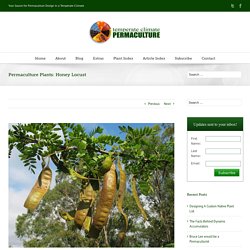

He Turned His Parent's 6-ACRE BACKYARD Into a PERMACULTURE Paradise — Ep. 050. He Turned His Parent's 6-ACRE BACKYARD Into a PERMACULTURE Paradise — Ep. 050. PERMACULTURE PONDS: Why, Where & How. Geoff Lawton: The Permaculture Designers Manual in One Hour. Basjoo Banana – BrighterBlooms.com. Basjoo is one of the hardiest Banana Plants on the market.

It is a very fast grower, capable of growing up to two feet in one week. This Hardy Banana Tree is also a very heavy feeder. This means that if you want your plants to grow quickly and well, you must feed it on a regular basis. Liquid plant food is recommended every 2 weeks to achieve maximum nutrition for maximum growth. Plant your hardy banana plants in full sun, but be aware that windy conditions can cause the fragile leaves of the banana plants to shred.
Jabuticaba - The Brazilian Grape Tree(It Grows Fruits & Flowers Directly on The Trunk) Preparing Grand Solar Minimum, Incredible off grid homestead, Oppenheimer Ranch. Loquat Tree Information - Growing And Caring For A Loquat Tree. MULBERRY Fruit Facts. Choosing Mayhaw Trees – Different Types Of Mayhaw To Grow In The Garden. 5 Vegetables that are too EASY to GROW in the Garden. How to Plant Lychee Seeds. Edible Plants With Red Leaves. Plants with red leaves are so pretty!

I've been busily collecting a list of edible red-leafed plants and varieties for you to use in a red garden, or to spice up a garden of any kind. Click on the photos to learn more about each plant. Salad plants with red leaves Almost all beets (Beta vulgaris) have red stems, but choose the "Bulls Blood" variety if you like your leaves to be red too. The young leaves are beautiful in salads. 'Red Magic' Chard (Beta vulgaris subsp. cicla) has beautiful red and green leaves with bright red stems. 10 Edible Perennial Vines for Vertical Gardening. Introduction to Permaculture. The Permaculture Principles guide our design decisions and organize the structure of our Permaculture system.

We are using David Holmgren’s version of the principles, where they are consolidated into 12. These principles should be learned in order to help inform all of your future Permaculture work. 12 Permaculture Principles This video explains the 12 Permaculture Principles as put forth by co-founder David Holmgren. Starting Your Permaculture Garden. Most people passionate about living sustainably and harmoniously with nature will eventually stumble upon the system of Permaculture, it’s hard not to, it’s a world-wide phenomenon and it’s growing!

If you’re reading this, then you’re one of these people! Some of you will eventually study Permaculture, and then, on graduating, go through what we term the “Permaculture Effect”, a sense of deep and profound inner change or realisation, and a passion that follows from there, to go out there and make a difference, to stop being part of the problem and be part of the solution!
Growing Goji Berries: Lycium barbarum. Overview A member of the Nightshade or Potato family, and of the Lycium genus, which has 22 members collectively called Desert-thorn, Wolfberry or Boxthorn.

Lycium plants are found around the world, including North and South America, Europe and Asia. DescriptionForm: Shrub with woody canes growing from its base. Lifespan: Perennial. Leaf retention: Deciduous. Growth rate: Moderate to rapid depending on location. Grow Your Own Juneberries. Amelanchier: A Confusing Genus By Roberta Bailey.

All About Growing Jerusalem Artichokes - Organic Gardening. Jerusalem artichoke strains vary by skin color, root shape and maturation time.

Shown here, from left to right, are ‘Red Fuseau,’ ‘Stampede,’ ‘White Fuseau,’ ‘Red Rover’ and a flowering Helianthus tuberosus plant. (For details on growing many other vegetables and fruits, visit our Crop at a Glance collection page.) Potatoes aren’t the only terrific tuber out there. Native to central North America, Jerusalem artichokes (Helianthus tuberosus) — often called by the more modern name “sunchokes” — are so prolific they can become invasive, but if handled properly, they will be a productive and rewarding crop. The edible parts of these plants are their knobby roots, which have a crisp texture like that of water chestnuts. Types to Try. Jerusalem Artichoke. Index | Search | Home D.R.

Cosgrove1, E.A. Introduction to Permaculture. Permaculture Archives. A few weeks ago I designed a fruit tree guild for the subtropics for a client in Central Florida.

Today I’m going to tell you how I did it and give you an in-depth look at how fruit tree guilds work. If you’re not familiar with the concept of plant or tree guilds, it’s a permaculture idea that serves multiple functions (as permaculture ideas often do!). Plant guilds combine intercropping or “companion planting” with pest control and insect habitat, nitrogen fixing and stacking more food and medicine into the same space that would normally contain just a single tree. Wild Tree Guilds In a forest, trees are almost never all alone. My perennial garden bed is basically a miniature planned forest. These are unimproved trees and plants, however. Gardening Without Irrigation. Permaculture Plants: Honey Locust. Common Name: Honey Locust, Thorny Locust Scientific Name:Gleditsia triacanthosFamily: Fabaceae (the Legume, Bean, or Pea family) Honey Locust is a common ornamental tree.

Description: This central North American native is a common ornamental shade tree in the suburbs of America. But this member of the Legume family is gaining popularity in the Permaculture world due to its many uses. Perennialsolutions. February 12, 2013 User Admin Eric Toensmeier This post is to celebrate the release of my new Perennial Vegetable Gardening DVD! Perennial Vegetables Defined. Amaranth. (Amaranthus sp. L.) History Amaranth is an old cultivated crop originating on American continent.
The Aztecs, Incas and Mayas considered amaranth as their staple food together with maize and beans. It used to be one of the most important crops in America before Spanish colonialists conquered it and further cultivation of the crop was banned. Present At present amaranth is grown in the USA, South America, India, China and Russia. Biological Characteristics Amaranth is an annual plant with C4 type of photosynthesis. Attributes This plant is valued for the positive chemical composition of seed that does not contain gluten.
Grain quality and Use Amaranth seeds have high content of proteins, essential amino acids and minerals. Food. Establishing a Permaculture based Food Forest. Permaculture is a design system that is based on understanding ecosystems, it takes a look at the interactions between the trees, plants, fungi, bacteria, birds, animals and all other natural elements to create a sustainable ecosystem. In the first video we go through a slideshow with Josh Robinson a permaculturist who gives us a detailed insight into Permaculture, the functioning and how it works as a sustainable solution in creating a food forest. He talks about the flaws in the tradition orchard system, where the same trees are planted together, thus making the soil deficient of the same nutrients, the need for fertilization and also susceptible to diseases.
The alternative to this method is a permaculture food forest, a perennial polyculture of multi-purposed plants. This design not only produce lots of food, but provide other services such as pest control, auto fertilization, mulch, pollination and much more. Permaculture Principles - thinking tools for an era of change. 10 Little-Known Plants For the Edible Landscape – REALfarmacy.com.
PAWPAW Fruit Facts. Alternative Food Crops. Alternative Food Crops Español Deutsch. Practical Plants.